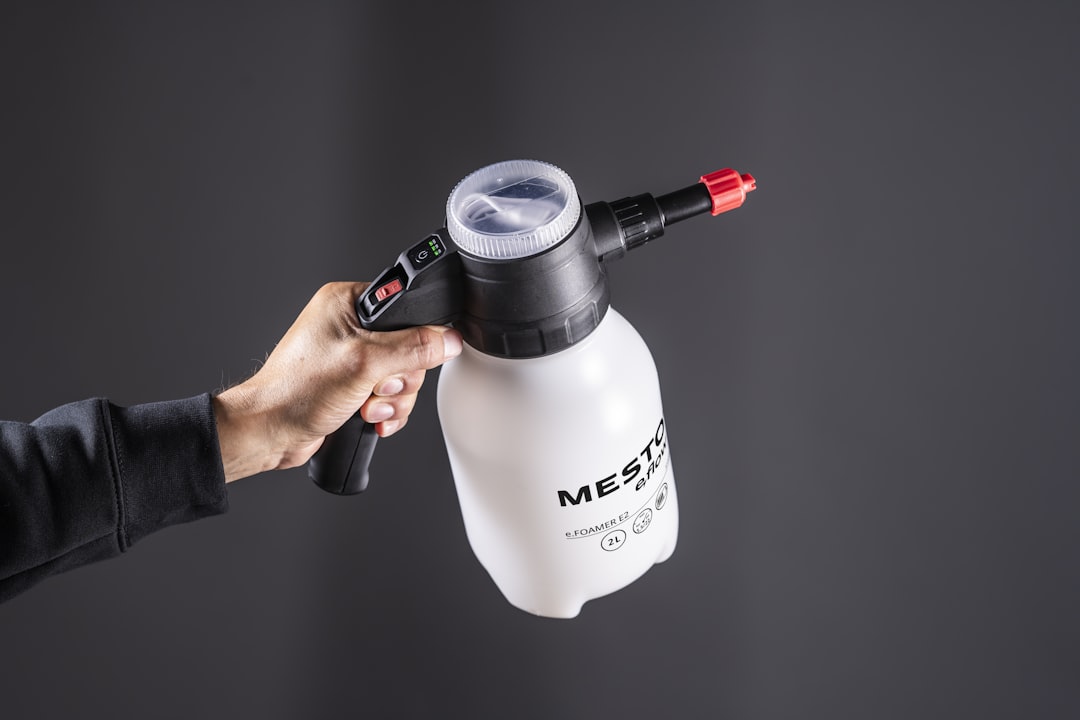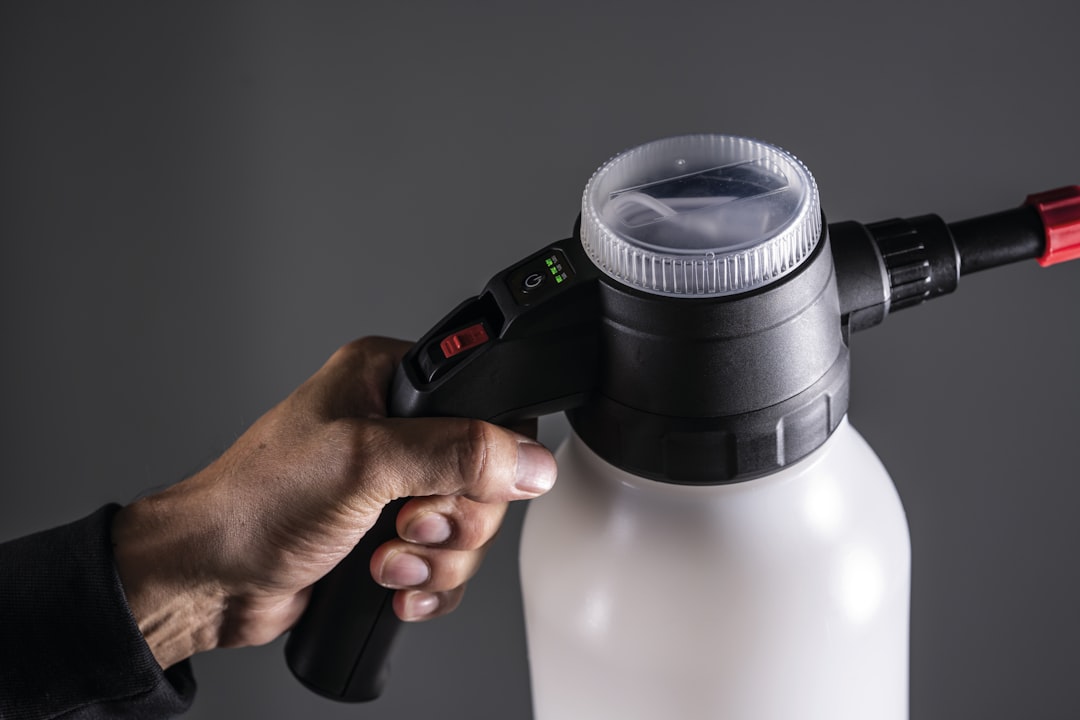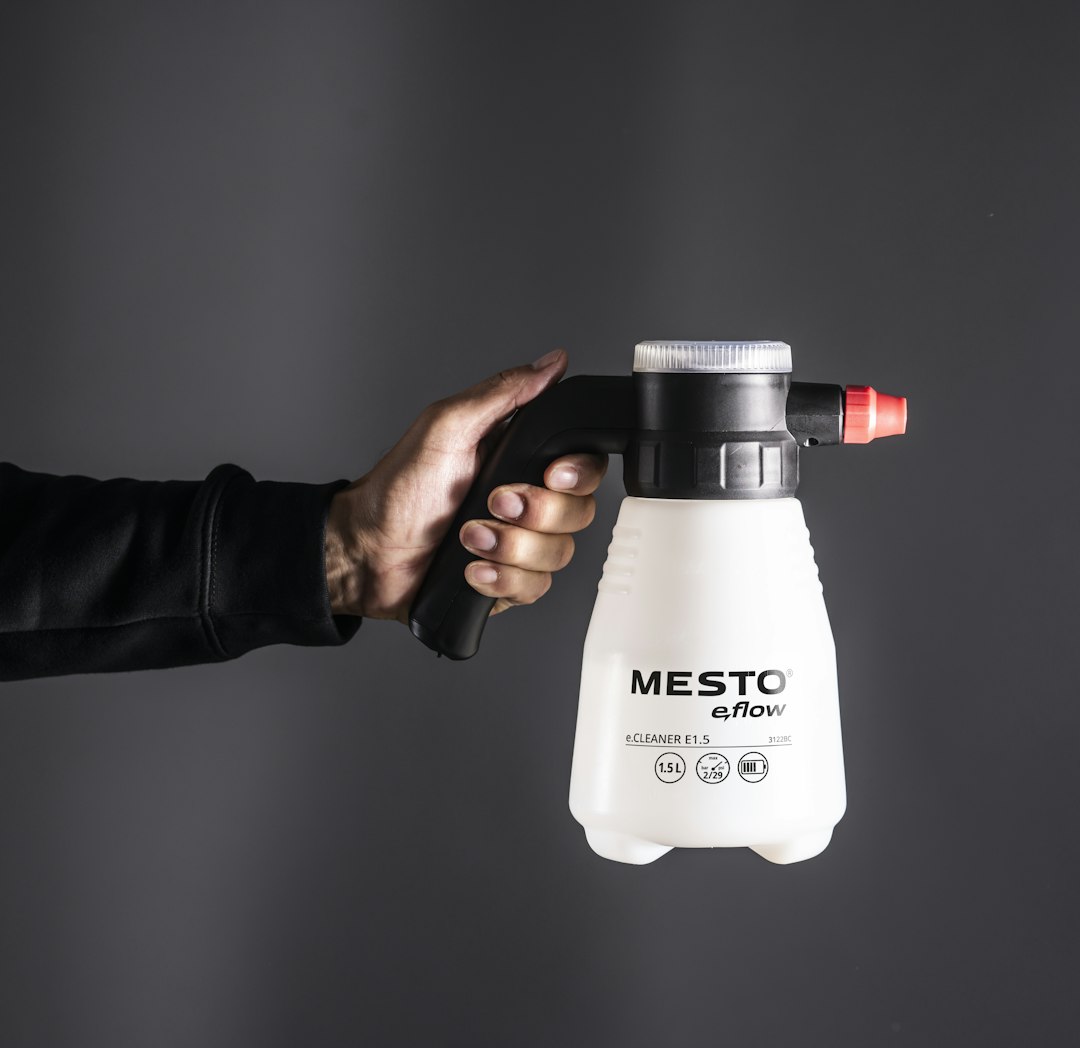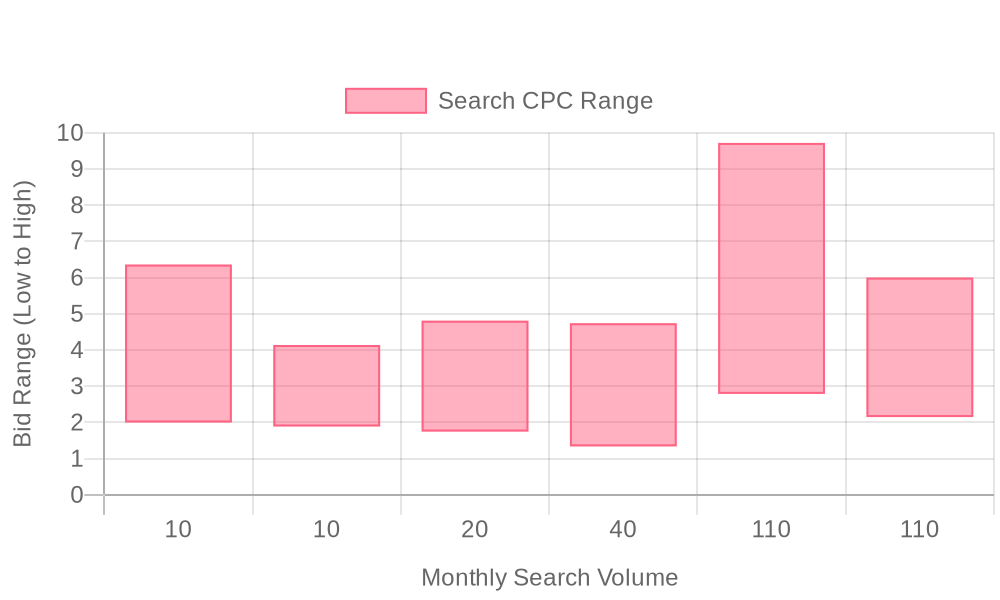
Supercharge your lead generation with a FREE Google Ads audit - no strings attached! See how you can generate more and higher quality leads
Get My Free Google Ads AuditFree consultation

No commitment
Supercharge your lead generation with a FREE LinkedIn Ads audit - no strings attached! See how you can generate more and higher quality leads
Get My Free Google Ads AuditFree consultation

No commitment
Supercharge your lead generation with a FREE Meta Ads audit - no strings attached! See how you can generate more and higher quality leads
Get My Free Google Ads AuditGet My Free LinkedIn Ads AuditGet My Free Meta Ads AuditFree consultation

No commitment
Supercharge your lead generation with a FREE Google Ads audit - no strings attached! See how you can generate more and higher quality leads
Get My Free Google Ads AuditFree consultation

No commitment
In today's complex marketing landscape, effective B2B marketing requires a strategic mix of both online and offline channels working in concert. For industrial cleaning chemical suppliers, capturing high-intent prospects at the precise moment they're searching for solutions through Google Ads provides a unique opportunity. By engaging decision-makers like facility managers or procurement heads at crucial moments, suppliers can enhance their visibility and ROI. Furthermore, ensuring that offline conversions are tracked alongside online metrics completes the ROI picture, enabling smarter budget allocation and improved performance measurement—from click to close.

Industrial cleaning chemical suppliers face complex challenges in digital marketing: long sales cycles, technical buying processes, and the need to reach decision-makers precisely when they are searching for solutions. Google Ads offers a direct channel to generate qualified leads by targeting facility managers, procurement teams, and plant operators who are actively seeking industrial cleaning chemicals.
A data-driven approach to Google Ads for industrial cleaning chemical suppliers unlocks visibility and high-intent engagement at scale. By integrating advanced analytics and offline conversion tracking, suppliers can connect marketing investments with real-world revenue, allowing teams to prioritize follow-up and allocate budget to campaigns delivering measurable ROI. To understand how offline attribution maximizes marketing ROI, explore the guide to offline attribution.
This step-by-step framework gives industrial cleaning chemical suppliers a blueprint for lead generation that blends precise targeting, data enrichment, and ongoing optimization. By leveraging unified data and intent signals, suppliers can transform online advertising into a predictable growth engine. Ready to elevate your lead generation? Get started for free with Sona.

Industrial cleaning chemical suppliers operate in a market where buyers search with urgent, specific needs. Precision in digital marketing is essential: every click must deliver a relevant prospect, especially when targeting facility managers or procurement teams seeking compliant, high-performance solutions. For actionable strategies tailored to this market, explore the essential guide to account-based marketing.

B2B suppliers in the industrial cleaning chemical sector face a demanding path to capturing high-value leads and increasing qualified pipeline. Digital marketing strategies must account for complex buying cycles and niche audience segments, elevating the need for targeted online advertising for chemicals. Google Ads for Industrial Cleaning Chemical Suppliers delivers precise reach, measurable ROI, and scalable growth by aligning campaign types to each stage of your marketing funnel. For an in-depth look at optimizing your approach, explore our essential guide to account-based marketing.
To see how these strategies can accelerate your growth, get started for free with Sona.

B2B marketers in the industrial cleaning chemical supply sector can unlock new growth by refining their digital advertising approach across Google Ads. Targeting niche audiences and leveraging precise audience intelligence allows suppliers to reach procurement managers, plant operators, and facility directors at the exact moment they are searching for industrial cleaning chemicals. By focusing campaigns on high-fit company profiles, marketers can maximize relevance, reduce wasted spend, and position their solutions directly in front of decision-makers.
Ready to accelerate growth? Get started for free with Sona.
Audience segmentation enables industrial cleaning chemical suppliers to maximize marketing efficiency and drive higher-quality leads. Tailoring outreach by buyer type and intent generates meaningful engagement and supports stronger sales alignment—while resources such as this directory of industrial cleaning chemical suppliers can help benchmark segment-specific offerings.
A segmented approach in digital marketing for suppliers not only improves targeting but also increases ROI in Google Ads by focusing spend where it delivers the greatest impact. Audience lists can update automatically as leads progress, supporting ongoing lead generation for suppliers and enabling more precise retargeting strategies throughout the buyer journey. To streamline your segmentation and campaign execution, get started for free with Sona.

| Industry | Keyword | Monthly Search Volume | Competition Level | Low Bid | High Bid |
| Industrial Cleaning Chemical Suppliers | janitorial chemical supplies | 10 | MEDIUM | 2 | 6.36 |
| Industrial Cleaning Chemical Suppliers | cleaning chemical manufacturing companies | 10 | LOW | 1.89 | 4.14 |
| Industrial Cleaning Chemical Suppliers | supplier chemical cleaning | 20 | LOW | 1.75 | 4.81 |
| Industrial Cleaning Chemical Suppliers | disinfectant manufacturing | 40 | LOW | 1.34 | 4.74 |
| Industrial Cleaning Chemical Suppliers | cleaning chemical suppliers | 110 | LOW | 2.79 | 9.72 |
| Industrial Cleaning Chemical Suppliers | cleaning chemical manufacturers | 110 | LOW | 2.15 | 6 |
Industrial cleaning chemical suppliers face a nuanced digital landscape where keyword precision directly impacts campaign profitability. Maximizing conversion rates in this sector hinges on moving beyond broad, generic queries and instead prioritizing high-intent terms that signal readiness to buy. To better understand the impact of targeted keyword strategies, explore this guide to account-based marketing strategies.
If you’re ready to optimize your keyword strategy and audience targeting, get started for free with Sona.

Precise targeting and actionable insights are critical for industrial cleaning chemical suppliers looking to increase high-value lead generation. Executing a robust Google Ads strategy accelerates both short-term pipeline and long-term brand authority in a competitive, specification-driven sector. For a directory of industrial cleaning chemical suppliers and product options, consult this comprehensive supplier listing.
This step-by-step framework addresses common pain points in B2B advertising: wasted spend on non-intent clicks, fragmented buyer journeys, and the challenge of aligning digital marketing for suppliers with real-world conversion events. Each step is designed to create a closed-loop system, ensuring every dollar spent is traceable, optimized, and tied to measurable business outcomes. Explore more actionable frameworks in the marketing and sales playbooks.
When enriched CRM and visitor intelligence are connected to Google Ads, marketers move beyond anonymous traffic. This enables audience lists to automatically update as contacts progress, maximizing campaign relevance and efficiency.
With dynamic audience sync between CRM and Google Ads, marketers can tailor messaging based on where a lead sits in the purchase process, ensuring every ad impression reflects current needs and readiness to buy.
Integrating advanced tracking via pixel and server-side data allows marketers to capture both online and offline interactions, tying ad engagement directly to sales pipeline and revenue events.
By syncing enriched intent data and offline sales outcomes into ad platforms and CRM, revenue teams gain a holistic view of ROI in Google Ads. This empowers continuous improvement, allowing industrial cleaning chemical suppliers to double down on strategies proven to drive qualified opportunities and revenue growth. To see how you can put these tactics into practice, get started for free with Sona.
Digital-first approaches continue to reshape the industrial cleaning chemicals market, making it essential for suppliers to differentiate through both reach and relevance. Modern B2B buyers expect personalized content, actionable information, and seamless engagement across every stage of their decision process. For practical ideas on how to evolve your strategy, visit the Sona blog for insights and proven frameworks.
Success in B2B advertising for industrial cleaning chemicals requires a closed-loop approach to data and engagement. Integrating offline sales activity with online touchpoints provides a complete ROI picture, while advanced visitor identification and real-time intent scoring allow for dynamic audience updates. By keeping your messaging, targeting, and lead management aligned with market and account-level data, you position your brand for scalable, sustainable growth. For more on audience tactics, explore retargeting strategies.
In conclusion, leveraging Google Ads effectively is crucial for industrial cleaning chemical suppliers aiming to boost their online presence and reach their target audience. By understanding the unique challenges faced in this sector, such as niche targeting and competitive keyword bidding, suppliers can craft ad campaigns that resonate with potential customers and enhance their ROI.
Throughout this article, we explored the essentials of creating targeted Google Ads campaigns tailored to the industrial cleaning chemical industry. From identifying the right keywords and crafting compelling ad copy to optimizing landing pages for conversions, these strategies are pivotal for gaining a competitive edge.
Imagine transforming your online advertising approach and witnessing a significant uptick in customer engagement and sales. By implementing these insights, you can elevate your brand's visibility and drive more qualified leads. It's time to take control of your advertising strategy and see real results.
Ready to unlock the full potential of your digital marketing efforts? Start for free to experience our platform and its capabilities today.
Best practices include adopting data-driven paid search, targeting industry-specific keywords and segmented audiences, aligning landing pages and creative for conversion, continuously optimizing performance, and integrating Google Ads with CRM and other digital channels.
Effective targeting involves using advanced audience segmentation, focusing on industry-specific keywords, leveraging dynamic audience sync, and tailoring ad messages to distinct segments such as facility managers and procurement teams.
Keywords should be specific and high-intent, such as 'bulk industrial degreasers supplier' or 'commercial cleaning chemical distributors,' and should also incorporate localized terms to match regional demand.
Success can be measured by tracking online and offline conversions, attributing revenue to specific keywords and audiences, and using unified data to connect marketing investments with actual sales outcomes.
Budget allocation should be based on campaigns delivering measurable ROI, with resources prioritized towards high-converting segments and adjusted using real-time audience and intent data.
Join results-focused teams combining Sona Platform automation with advanced Google Ads strategies to scale lead generation

Connect your existing CRM

Free Account Enrichment

No setup fees
No commitment required

Free consultation

Get a custom Google Ads roadmap for your business
Join results-focused teams combining Sona Platform automation with advanced Meta Ads strategies to scale lead generation

Connect your existing CRM

Free Account Enrichment

No setup fees
No commitment required

Free consultation

Get a custom Google Ads roadmap for your business
Join results-focused teams combining Sona Platform automation with advanced LinkedIn Ads strategies to scale lead generation

Connect your existing CRM

Free Account Enrichment

No setup fees
No commitment required

Free consultation

Get a custom Google Ads roadmap for your business
Join results-focused teams using Sona Platform automation to activate unified sales and marketing data, maximize ROI on marketing investments, and drive measurable growth

Connect your existing CRM

Free Account Enrichment

No setup fees
No commitment required

Free consultation

Get a custom Google Ads roadmap for your business
Over 500+ auto detailing businesses trust our platform to grow their revenue
Join results-focused teams using Sona Platform automation to activate unified sales and marketing data, maximize ROI on marketing investments, and drive measurable growth

Connect your existing CRM

Free Account Enrichment

No setup fees
No commitment required

Free consultation

Get a custom Google Ads roadmap for your business
Over 500+ auto detailing businesses trust our platform to grow their revenue
Join results-focused teams using Sona Platform automation to activate unified sales and marketing data, maximize ROI on marketing investments, and drive measurable growth

Connect your existing CRM

Free Account Enrichment

No setup fees
No commitment required

Free consultation

Get a custom Google Ads roadmap for your business
Over 500+ auto detailing businesses trust our platform to grow their revenue
Our team of experts can implement your Google Ads campaigns, then show you how Sona helps you manage exceptional campaign performance and sales.
Schedule your FREE 15-minute strategy sessionOur team of experts can implement your Meta Ads campaigns, then show you how Sona helps you manage exceptional campaign performance and sales.
Schedule your FREE 15-minute strategy sessionOur team of experts can implement your LinkedIn Ads campaigns, then show you how Sona helps you manage exceptional campaign performance and sales.
Schedule your FREE 15-minute strategy sessionOur team of experts can help improve your demand generation strategy, and can show you how advanced attribution and data activation can help you realize more opportunities and improve sales performance.
Schedule your FREE 30-minute strategy sessionOur team of experts can help improve your demand generation strategy, and can show you how advanced attribution and data activation can help you realize more opportunities and improve sales performance.
Schedule your FREE 30-minute strategy sessionOur team of experts can help improve your demand generation strategy, and can show you how advanced attribution and data activation can help you realize more opportunities and improve sales performance.
Schedule your FREE 30-minute strategy sessionOur team of experts can help improve your demand generation strategy, and can show you how advanced attribution and data activation can help you realize more opportunities and improve sales performance.
Schedule your FREE 30-minute strategy session





Launch campaigns that generate qualified leads in 30 days or less.
